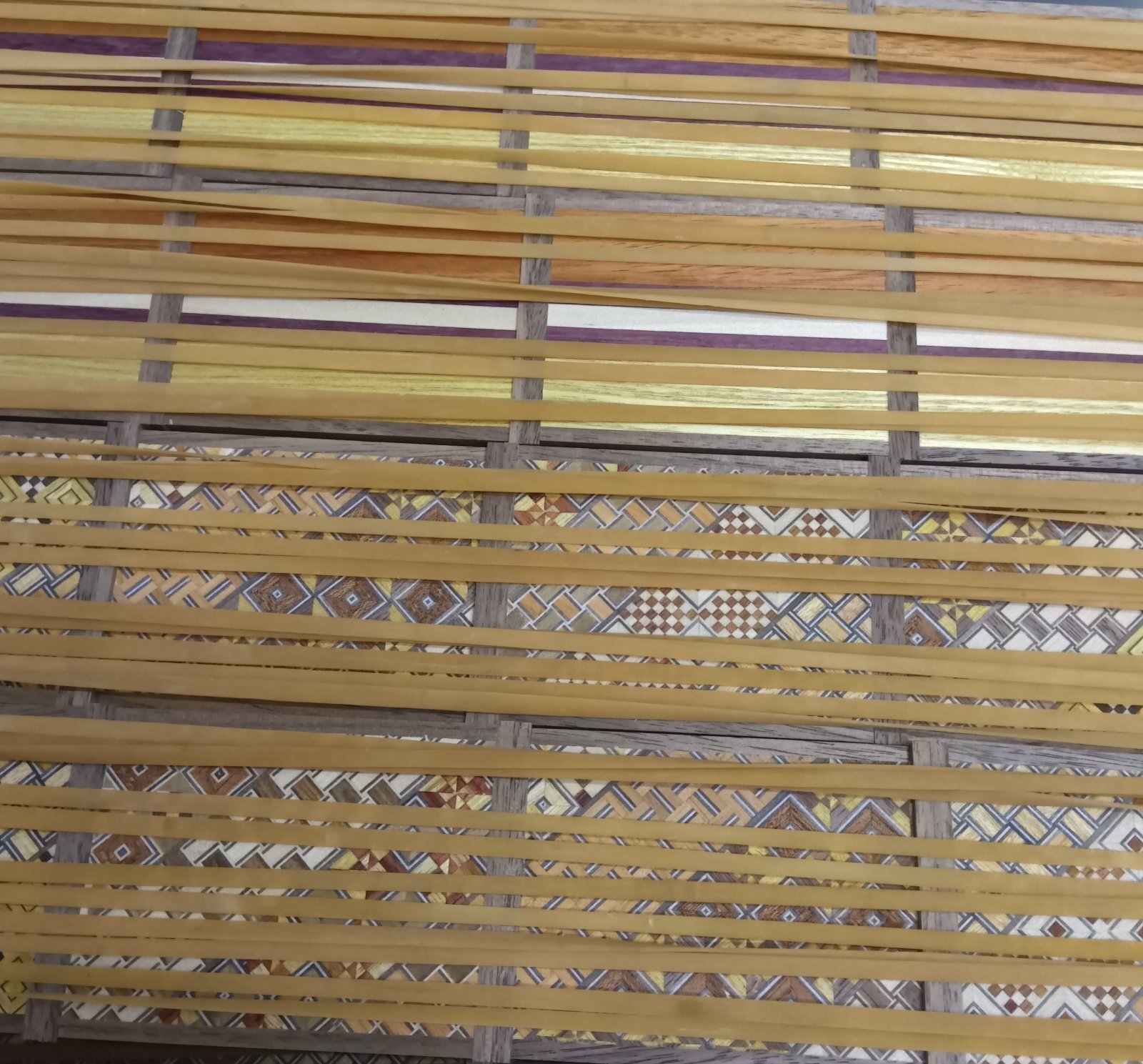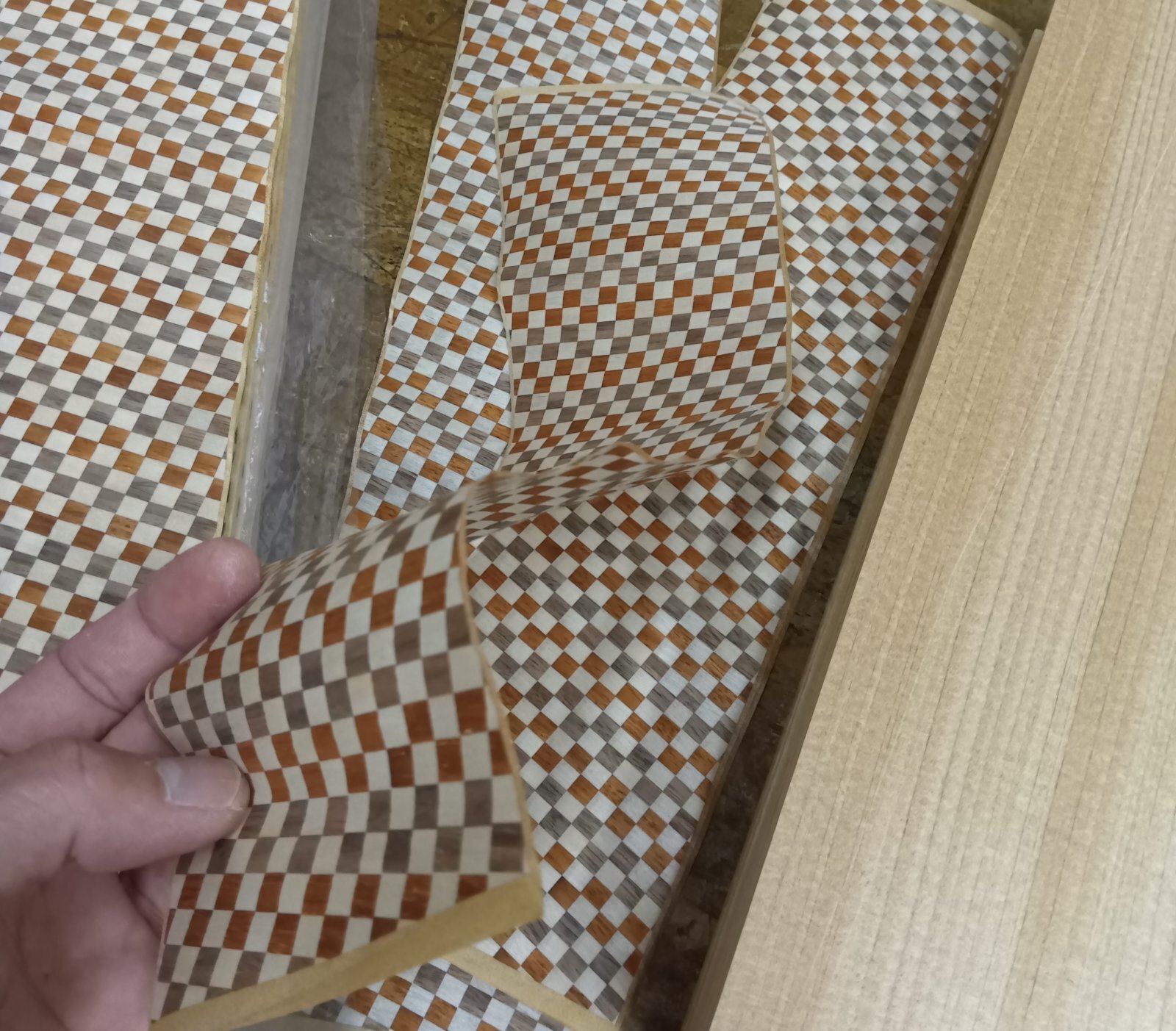Ichimatsu yosegi (2)
It’s Monday, and from today the weather has suddenly gotten much colder—it’s the kind of day that reminds you to be careful not to catch a cold!😅 Today, I finished attaching all the panels on the 3-sun 12-step Japanese puzzle boxes, and now they’re just waiting for the final painting process. These boxes are already ordered by overseas stores, so production is proceeding as planned. Recently, the number of 3-sun puzzle boxes I produce has decreased, so if you’re interested, please let me know. Only a few remain!
Earlier, I worked on pasting the Ichimatsu Yosegi sheets I’ve been preparing to wooden boards. These Yosegi sheets had already been sliced and stored yesterday. this time, The three-color Ichimatsu Yosegi uses hard woods like walnut and rengas, so slicing them requires skill. Hard woods are prone to tearing when sliced thinly due to their lack of elasticity, which can cause holes or fragmentation. While there were some minor tears in the red rengas sections this time, the overall slicing was successful.
The thickness of these sheets is about 0.15 mm. If sliced thinner, more sheets can be produced, but the colors become faint and less vibrant. On the other hand, if made thicker, the colors remain vivid, but fewer sheets can be produced, which is inefficient. Additionally, thicker sheets are harder to attach with glue and can cause the boards to warp after application. As such, a thickness of around 0.15 mm seems to be the ideal balance.
Now that I’ve attached the Yosegi sheets, my next project will be 3-sun cube boxes with the Ichimatsu design. I plan to start in a day or two.
Earlier, I worked on pasting the Ichimatsu Yosegi sheets I’ve been preparing to wooden boards. These Yosegi sheets had already been sliced and stored yesterday. this time, The three-color Ichimatsu Yosegi uses hard woods like walnut and rengas, so slicing them requires skill. Hard woods are prone to tearing when sliced thinly due to their lack of elasticity, which can cause holes or fragmentation. While there were some minor tears in the red rengas sections this time, the overall slicing was successful.
The thickness of these sheets is about 0.15 mm. If sliced thinner, more sheets can be produced, but the colors become faint and less vibrant. On the other hand, if made thicker, the colors remain vivid, but fewer sheets can be produced, which is inefficient. Additionally, thicker sheets are harder to attach with glue and can cause the boards to warp after application. As such, a thickness of around 0.15 mm seems to be the ideal balance.
Now that I’ve attached the Yosegi sheets, my next project will be 3-sun cube boxes with the Ichimatsu design. I plan to start in a day or two.

